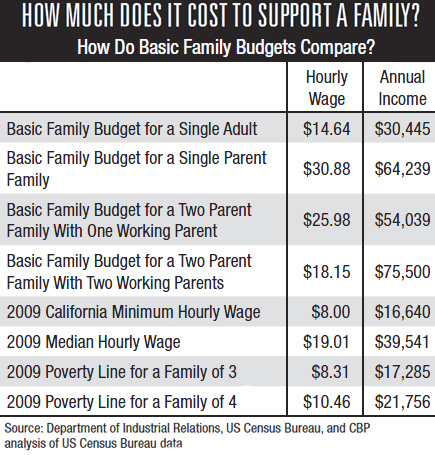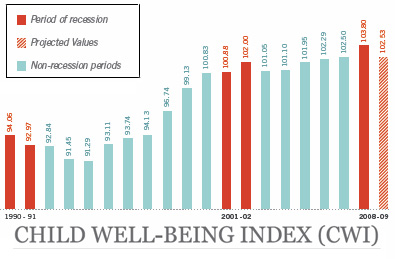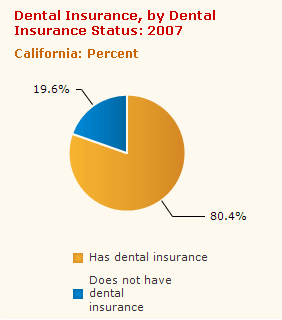Posts Tagged ‘Child Health Issues’
News Round-Up Features Articles About Autism, Whooping Cough, Special Needs, and More
The September issue of the Kidsdata News Round-Up now is available — read it here.
A few highlights:
Autism
Mother of Autistic Child Shares Back to School Stories and Struggles
(SF Chronicle, 8/26/10, by Shumaker and Winegardner)
Immunizations (Whooping Cough)
San Francisco Public Health Department Plans to Order Unvaccinated Kids to Stay Home if Classmates Get Whooping Cough
(Bay Citizen, 8/17/10, by Mieszkowski)
Vaccination Rates Remain Steady, but Cases of Whooping Cough Are Surging Nationwide
(NY Times, 8/16/10, by Parker-Pope)
Special Health Care Needs
Schwarzenegger Announces Launch of Nation’s Largest ‘Telehealth’ System; Will Make Specialty Care More Accessible for Children with Special Needs in Medically Under-Served Areas
(LA Times, 8/18/10, by Hennessy-Fiske)
Young Adults with Special Needs Find it Hard to Part with Their Pediatrician
(WSJ, 8/10/10, by Beck)
Posted by Jordan Handcox
Tags: Child Health Issues
Short Term Gains, but Long Term Challenges for Federally Funded Children’s Programs
 Two reports released at the recent Children’s Budget Summit paint a less-than-hopeful picture of the future of federal spending for children’s programs. The reports were produced by First Focus, a bipartisan organization advocating for children and families.
Two reports released at the recent Children’s Budget Summit paint a less-than-hopeful picture of the future of federal spending for children’s programs. The reports were produced by First Focus, a bipartisan organization advocating for children and families.
The first report, the Children’s Budget 2010, offers a guide to federal spending on children. The budget notes that spending on kids programs has increased in 2009 and 2010, largely due to dollars from the American Recovery and Reinvestment Act. (a.k.a. the Federal Stimulus) Even with this additional funding, spending on kids programs (ranging from health and education to child welfare and juvenile justice) remains at less than 9% of the federal budget.
A second report, Kids’ Share 2010, noted that overall spending on children’s programs has declined by 25% since 1960, and 10-year projections show a continued decline.
Despite a temporary boost from the Stimulus, children’s programs across the country face an uphill battle. Unless Congress makes children a higher priority and this increase in funding is maintained, these programs will need to cut back to pre-2009 budget levels, according to First Focus President Bruce Lesley.
How has your organization been affected by the Federal Stimulus?
Posted by Felicity Simmons
Tags: Child Health Issues
Could You Live Off of California’s Minimum Wage?
 A new report from the California Budget Project brings to light an issue that has a profound effect on the health and well being of children — living off minimum wage in California may be next to impossible.
A new report from the California Budget Project brings to light an issue that has a profound effect on the health and well being of children — living off minimum wage in California may be next to impossible.
According to the report, a single parent family with two children needs an annual income of $64,239 – equivalent to an hourly wage of $30.88 for a 40-hour workweek – to provide the basics: child care, health coverage, food, rent, utilities, transportation, and other modest expenses.
Yet the minimum hourly wage of $8 per hour generates an annual income of $16,640 for a 40-hour workweek – less than half of what’s needed to get by, according to the report. The impact on child well being can be wide-ranging. Children living in poverty are more likely to go hungry, reside in overcrowded or unstable housing, be exposed to violence, and receive a poorer education. Poverty also exposes children to chronic stress, which can hinder their physical, social, and emotional development. Children in families with inadequate income may face more substantial health problems than those in families with enough to meet basic needs.
The report is worth a look. In addition to offering statewide numbers, it includes data for all counties in California.
Posted by kidsdata.org
Tags: Child Health Issues, Data Projects
New Report Projects that Conditions for U.S. Kids Will Worsen
 The 2010 Child Well-Being Index (CWI), released this month by the Foundation for Child Development, reveals some startling statistics about how America’s children may be weathering the Great Recession. In 2010, the Great Recession may well wipe out almost all progress made since 1975 for children in the CWI’s Family Economic Well-Being Domain, which brings together measures of children in families living beneath the poverty line, median family income, parental employment, and health insurance coverage. Among the more concerning findings from this year’s
The 2010 Child Well-Being Index (CWI), released this month by the Foundation for Child Development, reveals some startling statistics about how America’s children may be weathering the Great Recession. In 2010, the Great Recession may well wipe out almost all progress made since 1975 for children in the CWI’s Family Economic Well-Being Domain, which brings together measures of children in families living beneath the poverty line, median family income, parental employment, and health insurance coverage. Among the more concerning findings from this year’s
CWI report:
- More than 1 in 5 kids currently live in poverty, according to projections, an increase of 5 percent in only 4 years. A related analysis, issued by our foundation, shows that poverty rates in California may be increasing by even greater amounts.
- Risky behavior, including violent crime and illegal drug use, are anticipated to increase.
- Reliance on cheap food with low nutrition may worsen the child obesity epidemic.
Also, although many measures point to a slowly recovering economy, the CWI shows a lag between when a recession first hits and its eventual impact, which means deteriorating conditions for children through the end of this year – or longer.
The researchers at Duke University who prepared this report also developed a similar index for California that projected that the Great Recession would leave a long-lasting impact on children in the form of sustained high levels of poverty. This California Index of Child and Youth Well Being, commissioned by the Lucile Packard Foundation for Children’s Health, employs measures from kidsdata.org to help illuminate how kids have been faring over time for California and two of the state’s most populous regions, Los Angeles County and the Bay Area.
Posted by Andy Krackov
Tags: Child Health Issues, Data Projects
CA Ranks 48th for Kids’ Dental Health; An ‘Epidemic of Dental Disease’
 A recent article in the New York Times sheds light on the current state of California’s children and their dental health, a condition which one Alameda County public health administrator called “an epidemic of dental disease in children that’s absurdly pervasive.”
A recent article in the New York Times sheds light on the current state of California’s children and their dental health, a condition which one Alameda County public health administrator called “an epidemic of dental disease in children that’s absurdly pervasive.”
The numbers are alarming – in 2007, nearly 20 percent of California children ages 2-17 were without dental insurance, compared to 6% of kids statewide who lacked health insurance. In the same year, more than a half-million California children ages 5-17 missed at least one day of school in a year due to dental problems.
Add on the fact that the state’s subsidized dental programs for low-income families are at risk of budget cuts, combined with the small percentage of dentists who are willing to participate in these programs, it’s clear to see why dental disease is considered a epidemic.
For a local perspective on dental care in California, check out a 2007 brief from our foundation, Children’s Dental Health: the 2007 Check-Up for Santa Clara and San Mateo Counties. This summary report highlights data that are available on kids’ dental care;
opportunities for action; and related local and statewide resources.
Posted by kidsdata.org
Tags: Child Health Issues


